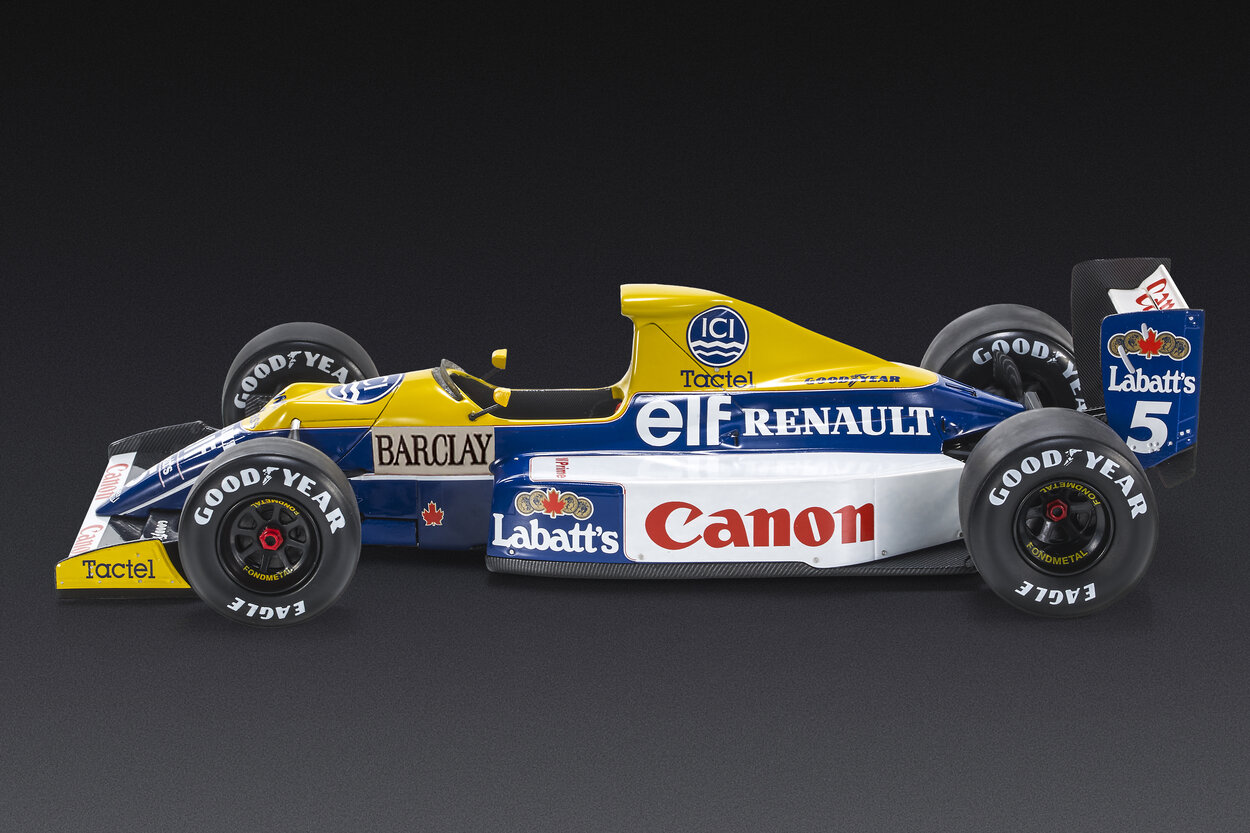Williams FW13B
In 1990, Frank Williams aimed to return to prominence in Formula 1, so he decided to start development work on his new car very early. The anticipation was so high, and the initial feedback was so positive that Frank decided to field the FW13 already in the last four races of the 1989 season, just to gain experience in race situations.
To everyone’s surprise, Thierry Boutsen took it to the top step of the podium in the race that concluded the season, the Australian Grand Prix held in Adelaide. His teammate Riccardo Patrese finished third. All the prerequisites for success were there.
In 1990, the FW13 became the FW13B. The modifications were minimal, mainly concerning the sidepods. The wide and narrow air intake above the driver’s head remained unchanged. The chassis was made of carbon fiber and kevlar. The design was led by the Argentine engineer Enrique Scalabroni under the direction of Patrick Head. Like on the FW13, the suspensions were no longer active. The engine was the Renault V10, 67-degree, 3.5-liter displacement, which had replaced the disappointing Judd from the previous season, a choice Williams had resorted to in ’88 after prematurely losing the Honda supply.

Drivers:
Thierry Boutsen: 1990 marks the last season in which the Belgian driver races for Williams. He bids farewell with a victory, his third and final one in his career, secured on August 12th at the Hungarian Grand Prix. Including the victory in Australia the year before, he notches up two wins behind the wheel of the FW13 in its two versions. In Budapest, he is the fastest in qualifying. At Hockenheim, he sets the fastest lap in the race. His 1990 season is completed by a second-place finish at Silverstone and a third-place finish in Phoenix.
Riccardo Patrese: The Italian driver wins the San Marino Grand Prix at Imola and takes back with interest the victory that had slipped clumsily from his grasp seven years prior. This time, the crowd is entirely behind him and applauds him. On four different occasions, he sets the fastest lap in the race – in Budapest, Estoril, Jerez, and Suzuka. He achieves seven points-scoring finishes and suffers four retirements.
Our model cars:

The results were not long in coming. The FW13B was fast in qualifying and reliable in races. In the 1990 season, it won two races and achieved two podiums. To these results must be added a victory and three podiums achieved in the final rounds of the previous season. Also in ’90, the FW13B secured a pole position and five fastest laps in races. At the end of the season, Williams finished second in the Constructors’ Championship.

